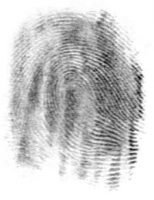Chance or Predisposition?
I always thought becoming a drug addict could only happen to others. I became one myself fairly late, at about 35 year-old, having never taken any drugs or alcohol in my life. In fact, I was terrified of all drugs, of their ability to rob people of their self-control. I was a very anxious person to begin with, so taking drugs and running the risk of becoming an addict was outright unthinkable. I genuinely thought I’d be forever safe.
That’s why I didn’t worry when my family physician prescribed benzodiazepines to treat the recurring panic attacks that were making my life nearly impossible (read The Two Faces of Drug Addiction). Had he informed me that those tiny pills would have on my brain a similar effect to alcohol, I would have given it some serious consideration, before diving head first into what would become a full-blown pharmaceutical nightmare.
My resentment towards this doctor lasted several years. I was unable to come to terms with the fact that I was prescribed such a highly addictive and therefore dangerous substance. And then I understood, thanks to extensive personal reading, that drugs don’t induce addiction on their own (read The Rat Park Study: Gaining a Better Understanding of Addiction). When people become addicts, it’s because they are predisposed to become so.
Using Rats to Understand Humans
Pier Vincenzo Piazza, a psychiatrist, neurobiologist and an addiction specialist in France, is particularly interested in discovering how addiction comes to be. “Addiction is not only about taking drugs; it’s about using them compulsively, in spite of its disastrous consequences. Such a behaviour affects a small fraction of the drug users (15–20%), and can be likened to a chronic disease, as relapses are common (90% approximately) even after prolonged abstinence.”[1]
The rat is usually the chosen animal to study drug abuse, because it displays a surprisingly similar behaviour to man. During 3 months in 2004, Piazza and his research team observed the patterns of drug use in rats trained to self-administer cocaine.
Of Addicted Mice and Men

17% of the rats undergoing the experiment had become “drug abusers” and showed signs of addiction after the second or third month of self-administering cocaine. Drug abuse, therefore, is not only brought on by a prolonged exposure to drugs—which remains an aggravating factor—, but also by individual vulnerability. The brain of the drug abuser is predisposed to developing behaviours of addiction.
The study allowed the research team to evaluate three behavioural patterns considered as diagnostic criteria by the DSM IV (the most widely used diagnostic manual of mental disorders):
- Difficulty in stopping or reducing the drug use
This was tested by counting the rats’ demands for cocaine during periods of forced abstinence. When cocaine was not distributed anymore, the “normal” rats stopped asking for it, while the “addicted” rats continued.
- Level of motivation in searching and using drugs
The rats’ motivation was tested by counting how many demands they made for drugs. The “normal” rats stopped asking after a few unsuccessful attempts, whereas the “addicted” rats repeated their demands up to a thousand times.
- Continuation of drug use in spite of adverse effects
Compulsion was evaluated by testing the rats’ persistence when drug use was associated with punishment. “Normal” rats stopped when electric shocks were administered with every demand, but the “addicted” rats endured the shocks and persisted in their demands.
17% of the rats undergoing the experiment had become “drug abusers” and showed signs of addiction after the second or third month of self-administering cocaine. Drug abuse, therefore, is not only brought on by a prolonged exposure to drugs—which remains an aggravating factor—, but also by individual vulnerability. The brain of the drug abuser is predisposed to developing behaviours of addiction.
Nobody Wants to Be an Addict
Some believe that addicts choose to become addicted. After all, they chose at some point to use drugs, which means they accepted the possibility of becoming addicted. Addiction would be nothing else than the unfortunate consequence of bad choice making. This idea persists, even though Piazza’s research clearly shows that drug use leads to addiction in only 17% of the rat population. If the other 83% remain “un-addicted”, it’s not because they have greater strength of character or because they made the right choice not to use drugs, but because they are naturally less vulnerable to the addictive properties of the drug than their peers. If a non-addicted person can stop using drugs with ease, he might think everyone else can and should. But the fact is that we are not all equal when it comes to addiction.
I couldn’t help identifying with the poor addicted rat, who asks for his dose of drugs over a thousand times, in spite of the electric shocks. When I was addicted to the benzodiazepines and at my worst, I had to take 10 mg daily (the usual dose being 1 mg) to avoid the crushing and distressing withdrawal symptoms that usually drives someone to compulsively use drugs. I was ready to do whatever it took to get my fix, to survive. I lied, I manipulated, I abused my doctors’ kindness, I threw tantrums with my parents. In short, I had an appalling behaviour that went against everything I stood for (read, Alexander's Journey: How Drug Addiction Estranged Him From His Family). No one recognized me anymore. The intelligent girl who did her PhD in Paris and led an impeccable academic career had disappeared. I had become a monstrous drug addict, and this label threatened to cast all my previous successes in the dark, and redefine me in the eyes of my family and friends.
The Brain of the Drug Addict is Unique like a Fingerprint

Today, I know that the addict’s brain is unique like a fingerprint. It cannot afford to be subjected to any psychoactive substance, because it doesn’t have the capacity to react moderately to it. Knowing this, never doing drugs is the right choice for addicts.
Making the bad decision to do drugs does not necessarily lead to addiction, but addiction definitely leads to making all the bad decisions. And the only people unable to realize this are the drug addicts themselves, when they are blinded by the horrifying rollercoaster of drug abuse they are stuck in.
Today, I know that the addict’s brain is unique like a fingerprint. It cannot afford to be subjected to any psychoactive substance, because it doesn’t have the capacity to react moderately to it. Knowing this, never doing drugs is the right choice for addicts. And those who wish to put an end to their addiction must do nothing short of reprogramming their brain (Programs and Services at Portage).
Only other people get addicted? Every other is a self like myself.
Isabelle Fortin
Blogger for Portage
Lan Vi Pham
Editor and Translator
[1]http://www.google.ca/url?sa=t&rct=j&q=&esrc=s&source=web&cd=1&ved=0ahUKEwjTxpXims3VAhVC3IMKHZuXBcoQFggmMAA&url=http%3A%2F%2Fwww.inserm.fr%2Fcontent%2Fdownload%2F9790%2F73888%2Fversion%2F1%2Ffile&usg=AFQjCNHZUpAJJL39cfybPM5UNv1q_beMvQ






Leave a Reply